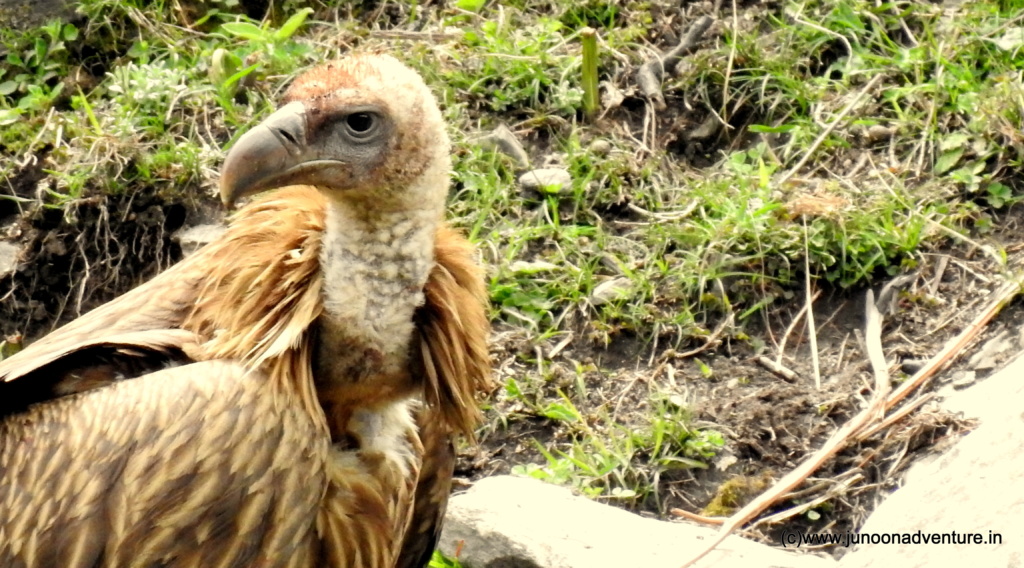There is something truly regal and totally intimidating about this bird – the way it stares right at you with those glowering eyes. You can imagine the reaction we got, especially from the kids, when we spotted this Himalayan Griffon Vulture on one of our annual JT2 Himalayan Trekking Camps. As we were walking up the trail in Bhabha Valley, this monstrous thing glided past us in a whoosh that got a scream from quite a few in our group. And then, after a bit of ominous gliding, this stately looking bird lands on the other side of the stream and we exclaimed – My God, it is awesome!
SPECIES:
Gyps Himalayensis, is one of the nine species of vultures found in India, a type of Old World Vultures that are historically resident to Asia, Europe and Africa.
FOUND IN:
The Upper Himalayas and the Tibetan Plateau. Juveniles tend to be more exploratory and have been known to venture further south.
FEATURES:
The Himalayan Griffon Vulture is huge, in terms of size, weight, wing span – pretty much everything! Its weight can range anywhere from 6-12kgs and it can grow as much as 45inches in length. Due to sheer size and weight, these birds are incapable of sustained flapping flight and are thus, often seen soaring on wind thermals. These birds are pretty choosy as well – they don’t like offal (which is easily eaten by other vultures) and prefer to restrict their diet to only the fleshy parts of a carcass. Himalayan Griffon Vultures usually nest on inaccessible cliff ledges at altitudes ranging between 1200-4000 Metres above MSL.
EXTRA FACTS:
Himalayan Griffon Vultures were badly hit in the recently observed Indian Vulture Crisis. The populations of this bird has seen a massive decline, pushing it to a Near Threatened Level, mainly because of the extensive use of the drug ‘Diclofenac’ as an anti-inflammatory medicine with livestock. The drug is fatal to vultures and can reach their digestive system if they feed on an animal carcass that had been recently treated with Diclofenac. The drug is now banned for use as a veterinary medicine in India. With all the efforts being made by the Indian Government and Forest Conservation Authorities, the bird has actually made a comeback in Himachal Pradesh, especially around Upper Kinnaur and Baspa Valley regions.



